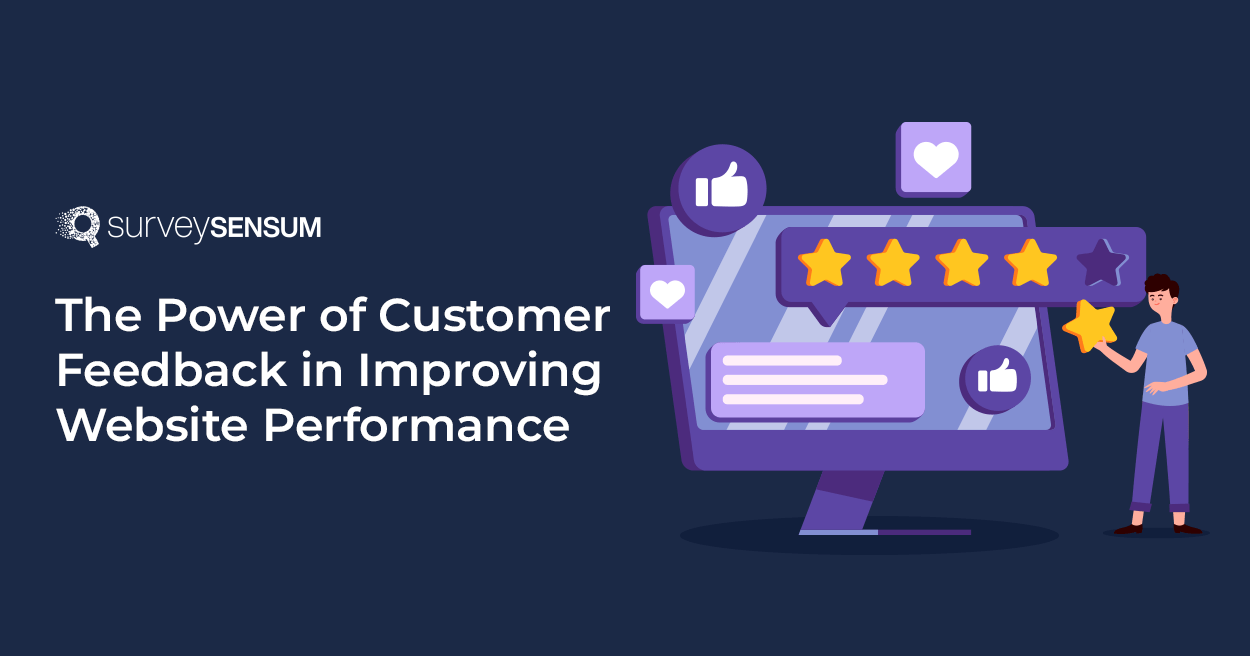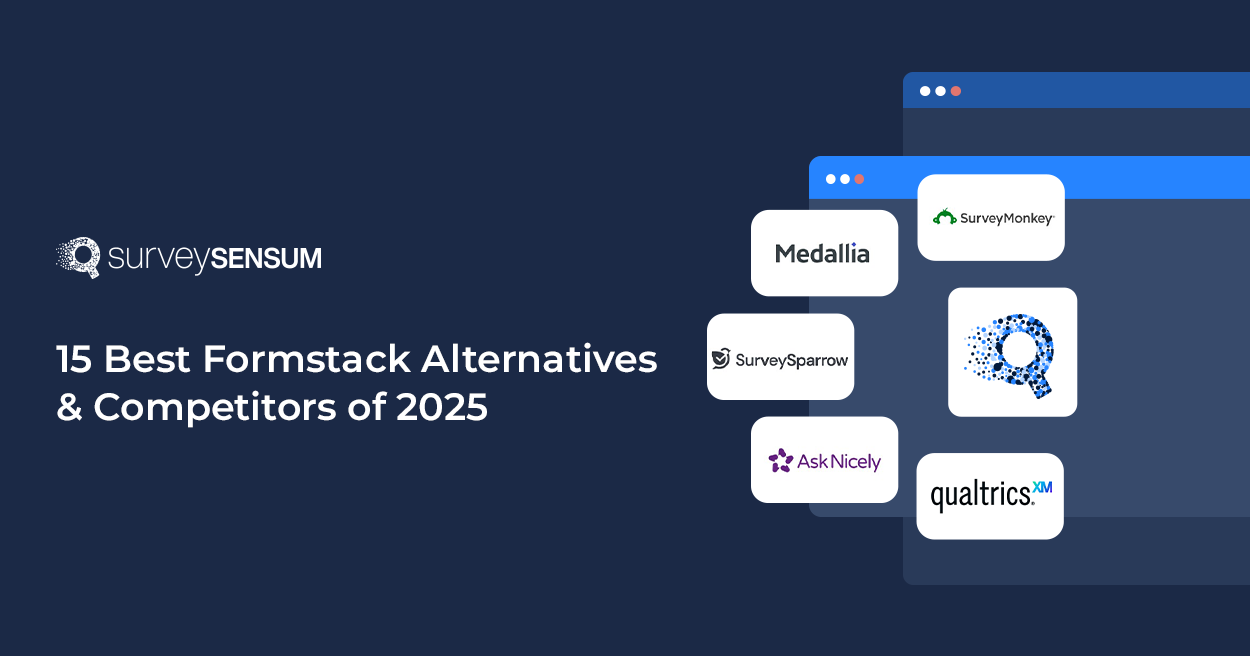
Customer feedback is not merely a tool for gauging customer satisfaction. Instead, it’s an invaluable resource for optimizing your website’s performance.
Indulging in open dialogue with users allows you to understand what works and what needs improvement, as observed from their perspective. This user-centric approach translates into actionable insights, helping deliver better web experiences that drive business growth and increase brand loyalty.
By taking on board direct observations or suggestions from users about site speed, navigation complexity or load times, you can quickly discover any weak spots within your digital structure. This matters a lot, as a Deloitte study found that even a 0.1 second difference in page load speed can influence conversion rates by as much as 10%.
Therefore, appreciating and utilizing customer feedback effectively serves as the cornerstone for refining websites successfully. Given that a report from Microsoft found attention spans are shrinking, falling to 8 seconds from 12 seconds since the turn of the millennium, this is only going to become more relevant with each passing year.
With all that in mind, let’s look at the different areas in which this has a part to play in more detail, so you can implement such a strategy to overhaul your own site.
Top 10 Ways to Leverage Customer Feedback to Improve Website Performance:
1. Optimizing Website Speed
If visitors tell you that your site is loading slowly, you need to take action, as we’ve established. Here are some things to do in this situation:
- Minimize HTTP requests by streamlining the elements on each page.
- Choose a reliable WordPress hosting provider that offers fast and stable servers, which can significantly enhance your website’s loading speed and overall performance.
- Reduce server response time to address any performance bottlenecks such as slow database queries. Choosing the best database system and comparing MariaDB or MySQL will also help with speed.
- Enable browser caching using Perfmatters plugin if you are using WordPress platform so repeat visitors can load your site faster.
- Compress website content, using tools like Gzip, to reduce the size of data that’s being transferred.
- Optimize images by compressing them without sacrificing quality and use appropriate sizes for your layout.
- Use a Content Delivery Network (CDN), which distributes copies of your site among multiple geographically dispersed servers for faster delivery.
- Prioritize above-the-fold content loading: this technique ensures that users see visual progress in page load relatively quickly.
- Remove or delay JavaScript running until necessary. It blocks browsers from processing anything else while fetching and executing scripts.
- Leverage asynchronous loading of CSS and JavaScript files to speed up pages because these files will load simultaneously instead of one at a time.
By using feedback to guide your troubleshooting, the upshot will be that every choice you make and fork in the road you face regarding pure page speed optimization in a data-driven way. If you want to explore further ways to optimize your site’s performance, consider looking into nodejs logging for comprehensive insights into enhancing the efficiency of your web applications. For expert assistance, you might also want to explore NodeJS Development Company.
2. Enhancing Website Reliability
User comments are an indispensable tool for tracking your website’s reliability, and since the cost of downtime is steep, you want to make sure it stays live to serve visitors 24/7. Here are some ways they can prove instrumental:
- Users often report issues related to site outages or error messages. Addressing these problems promptly could greatly enhance the perceived reliability of your website and turn detractors into promoters.
- Positive feedback from users about constant uptime assures you that your web hosting service is dependable, allowing you to focus efforts on other areas. This is particularly important if your site is a SaaS portal.
- Negative remarks about security breaches provide opportunities for strengthening the protective measures, proving crucial in maintaining user trust and confidence in your digital platform.
By focusing diligently on comments directed towards the site’s stability and security, you have a direct line into consumers’ evaluation of its dependability. This enables strategic prioritizing of fixes enhancing overall user satisfaction, turning words into action.
3. Crafting Exceptional User Experience
Customer feedback, especially for a website development company, plays a pivotal role in crafting an exceptional user experience on your website. This is a cumulative aspect of what it offers, combining underlying performance with other elements like interface design. Input from visitors can help in the following ways:
- Feedback about site navigation helps to improve design for intuitive browsing, minimizing bounce rates, and adhering to best practices.
- Comments regarding readability and content relevance provide useful insights into information architecture and layout adjustments.
- Suggestions about features or services can guide further development aligning more closely with users’ needs.
Paying close attention to customer feedback means decisions concerning UX modifications are driven by genuine demand, transforming opinions into actions that foster continued visitor engagement. This cycle iteratively improves user satisfaction over time and leads to better website performance.
4. Turning Negative Reviews into Opportunities
Negative reviews, when approached constructively, can be instrumental in bolstering your website’s performance:
- Criticisms may indicate well-known website errors and areas that require immediate attention, like broken links or formatting issues. Rectifying these will significantly enhance the overall user experience.
- Stratify harsh comments to identify trends. These could reflect systemic issues needing comprehensive action and provide a guide for quality improvement efforts.
- Customers dissatisfied with the responsiveness of customer service portals present an opportunity to improve communication channels consequently boosting site credibility and trustworthiness.
Understanding negative feedback as an avenue for growth rather than a setback enables you to take decisive corrective actions. As such, augmenting your web platform’s effectiveness while building stronger relationships with users.
5. Leveraging Positive Feedback
Positive feedback provides important insights into your website’s strengths, supporting continuous improvement. Let’s look at a few ways you can wring value from glowing reviews:
- Compliments about site usability can inform future design choices, ensuring that the user experience remains top-notch.
- Praise for specific features or aspects of content shows you what users value most, guiding you in creating more of the appreciated content or emulating successful functionalities elsewhere within the site.
- When customers highlight prompt customer service on your platform through a Likert scale survey, it signals a well-functioning communication channel which should be preserved and perhaps even scaled-up.
Recognizing trends in positive remarks, from site aesthetics to robust security measures, lets you identify key success drivers. Harness this knowledge to maintain outstanding attributes and preserve site performance in response.
Gather Customer Feedback with Surveys – Sign Up for Free
6. Deciphering Neutral Reviews
Neutral reviews contain valuable insights that might otherwise go unnoticed, so it’s important not to overlook them. Here are ways to get the most out of them:
- When customers mention a feature without expressing an opinion, it could indicate this function is merely meeting the basic expectation. Thus, it may warrant further enhancement to captivate users.
- Users not indicating any major trouble points but also lacking enthusiasm for your site basics, signals there’s room for improvements centered around making the user experience extraordinary.
- Subtle suggestions or remarks presenting mixed feelings about certain aspects of your website can help you identify areas with potential for more significant tweaking.
Delving deep into neutral feedback gives you an opportunity to refine your website from satisfactory to exceptional, stirring emotion and creating memorable digital customer experiences.
7. Boosting Web Traffic
Transforming customer feedback into strategic decisions can effectively drive more traffic to your website. Consider the following strategies in this context:
- Implement recommendations from users about user-friendly navigation, user privacy, or design suggestions to make the website inviting, and to increase visitor count.
- Improved communication, based on user feedback, facilitates easy customer interactions and promotes retention over acquisition.
- Paraphrasing existing content can be a way to generate new ideas and variations, keeping your site fresh for users and search engines. This can prevent stagnation and potentially attract new visitors.
Listening closely and reacting swiftly to what customers say is a well-strategized plan which can ensure amplification in web traffic, showing how real improvement happens when action is coupled with feedback.
8. Nurturing User Relationships
Nurturing relationships with users is a core component of any successful web platform. It promotes active engagement and fosters trust, transforming casual visitors into loyal followers. Here are ways you can accomplish this:
- Engage in open, two-way dialogues with your audience. This encourages them to share their experiences and ideas freely. In turn, it cultivates an environment where they feel valued and heard.
- Utilize feedback as key to identifying growth and refinement opportunities on your site. Each comment or suggestion provides unique insights towards offering enhanced user experience.
- Strive to deliver exceptional digital experiences that meet or exceed user expectations based on their feedback. Prioritizing customer satisfaction will only reinforce your brand’s overall reputation.
In brief, the quality of the relationship you establish with your users significantly influences their loyalty towards your online ventures.
9. Data-Driven Decision Making
Leveraging data from user feedback supports informed decision-making for your website’s refinement. It illuminates patterns, details specific problem areas and their potential solutions. Here are ways you can use such insightful information:
- Base major decisions on the valuable input provided by users targeted towards site performance issues or features. They’re often the first to spot something amiss.
- When vetting technical solutions like new plugins, themes, or hosting options, remember to factor in considerations echoed through customer comments.
- Aligning business strategies with finer insights derived from customer feedback is pivotal. This connection ensures that web improvements you implement meet user expectations.
Gleaning actionable knowledge from user feedback assists in dynamic decision-making that takes into account the unique needs and preferences of your audience. The end goal is to produce a perfectly tailored online platform.
10. Continuous Improvement Cycle
Web performance improvement is a continuous, cyclical process that thrives on the back-and-forth of user feedback. Each iteration brings about enhanced navigation experience and better engagement opportunities.
Explore these adaptations:
- Emphasize regularly to users how their feedback drives iterative improvements. This reassures them that their voices are not only heard but indeed act as catalysts for change.
- Engage with user feedback routinely to refine website functionality progressively. Keep monitoring incoming reviews and comments for new light on recurring issues or novel concerns.
- Harness customer insights in your business development strategy. It’s these observations from real users that can give you a considerable competitive advantage online.
This iterative learning cycle, driven by consumer-powered growth and expert guidance from your UX agency, ensures you’re continually working towards a better UX, ultimately contributing to the overall success of your operations.
Conclusion
Ultimately, customer feedback profoundly influences every facet of your website’s performance. Nurturing a dialogue with your users not only fosters relationships but also unlocks opportunities for growth and refinement. Engaging deeply with this feedback guides you in delivering exceptional digital experiences that drive both user satisfaction and business success, so don’t sit back and ignore the opportunities it presents.
Author Bio:
Dean Fankhauser, the visionary CEO & Founder at PromptPal, has an impressive portfolio as the mastermind behind Blu.Ventures, a startup studio cultivating innovations in blue ocean industries. With notable ventures like Bitcompare, Movingto, and AITW under his belt.















